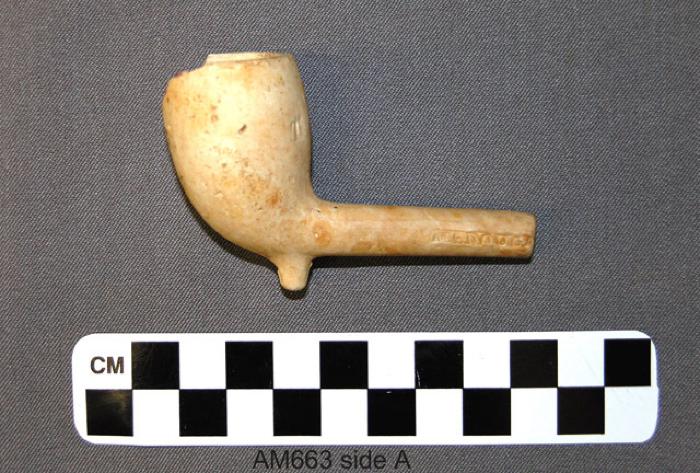Pipe — TRuup’kaaq, Pa’ipaaq

Although tobacco was popular in the historic era, smoking tobacco was not. Historic sources indicate that Alutiiq people preferred to create snuff by adding tobacco to a mixture of wood ash, black tea, and dried crushed nettle leaves. This produced iqmik, a substance held in the mouth. Smoking tobacco gained popularity later, perhaps in the last decades of Russian rule.
By the 1840s, tobacco pipes were among the trade goods imported to Kodiak. Manufactured in western Europe, the earliest pipes were inexpensive objects imported both for use by colonists and for trade to Native people. These pipes were made of kaolin, a soft, white clay. They featured a small, deep, outwardly sloping bowl with a narrow, tapering stem. The stem was often very long, allowing the user to continue smoking the pipe if this fragile part broke.
For archaeologists, kaolin pipes provide a means of dating historic sites, because their styles and designs changed quickly. Pipes from the early nineteenth century, for example, have wide bowls decorated with geometric designs and even faces. In contrast, older varieties tend to have smaller, unadorned bowls. Around Kodiak, kaolin pipes fell out of use in the late-nineteenth century as wooden pipes and cigarettes gained popularity.
